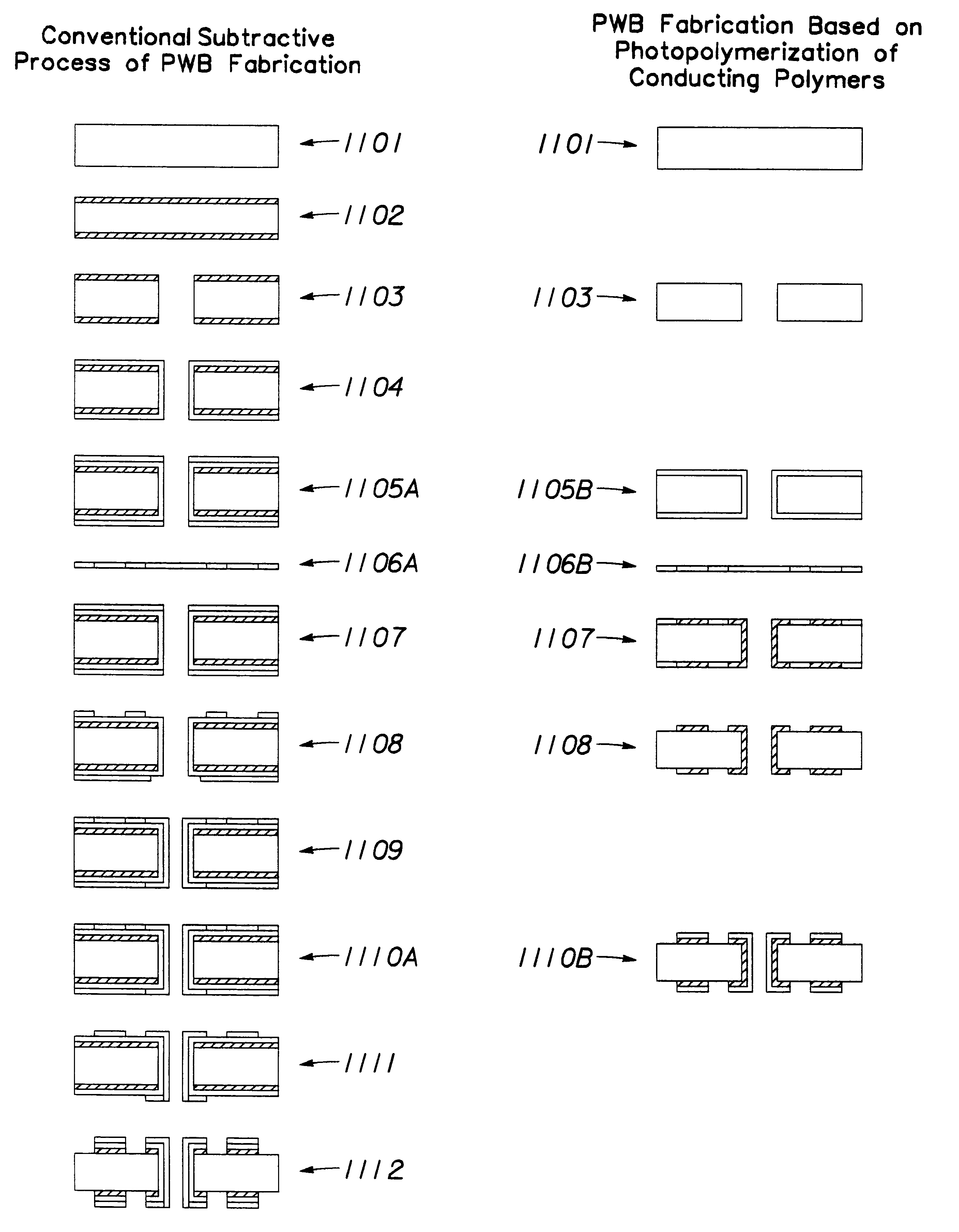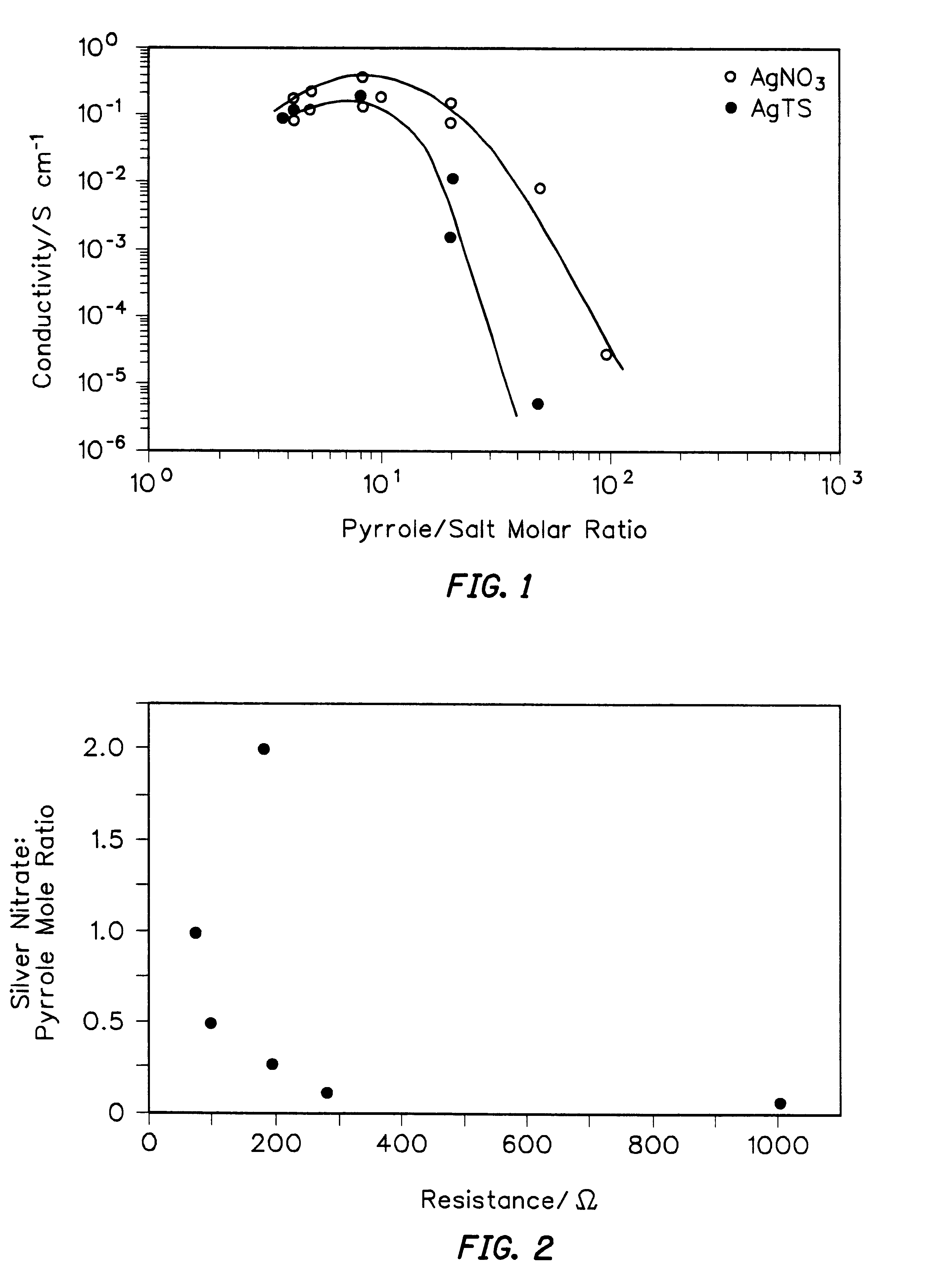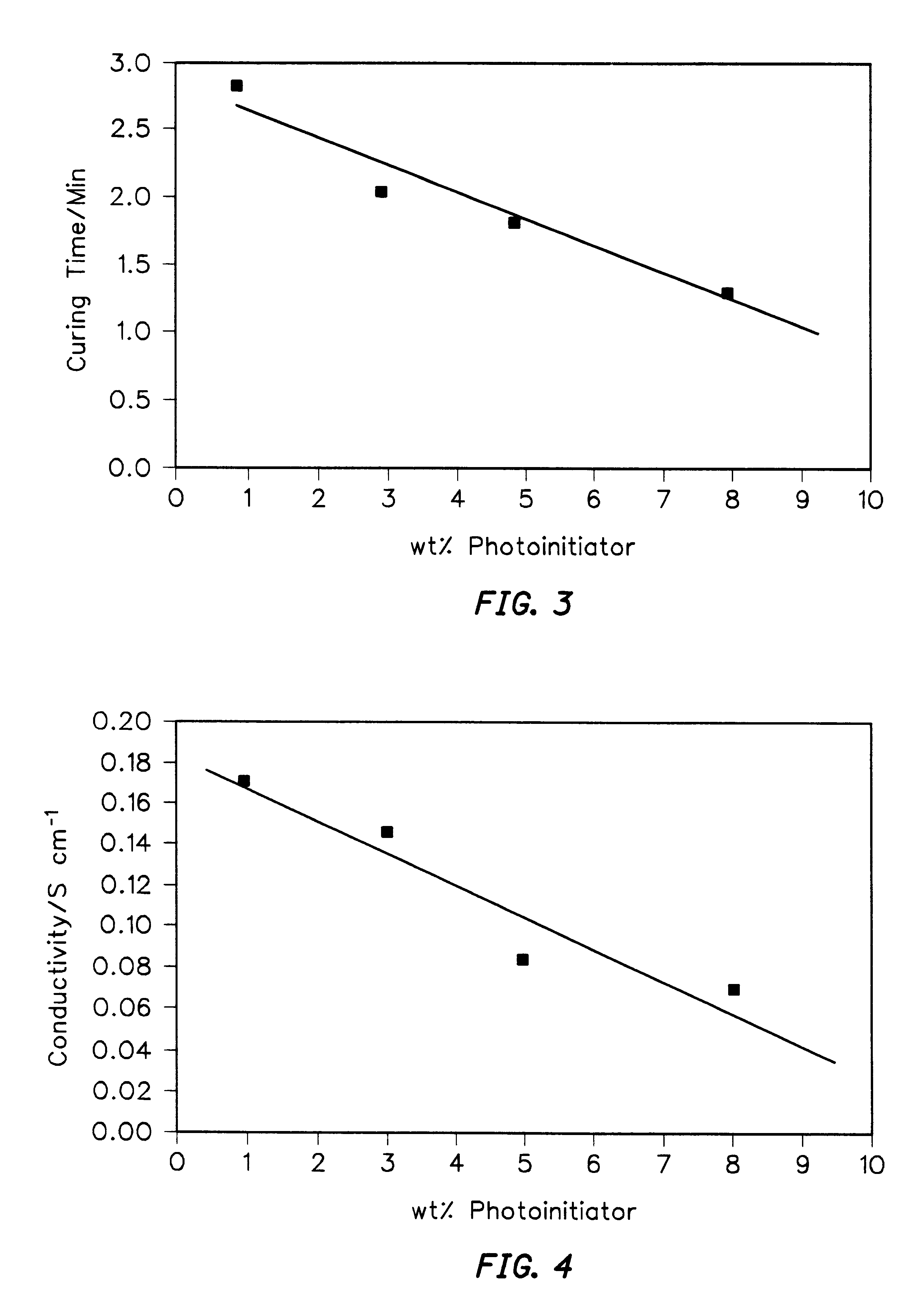Method of forming electronically conducting polymers on conducting and nonconducting substrates
a technology of electronic conductivity and polymerization method, which is applied in the direction of magnetic/electric field screening, metallic pattern materials, hydrocarbons, etc., can solve the problems of increasing stringent requirements for all production steps, difficult removal from waste streams, and reducing the efficiency of electroless copper waste treatment,
- Summary
- Abstract
- Description
- Claims
- Application Information
AI Technical Summary
Problems solved by technology
Method used
Image
Examples
example 2
In order to improve the mechanical properties of PPY films three different electron acceptor salts were investigated: AgNO.sub.3, AgTs and AgBF.sub.4. It has been reported that incorporation of tosylate anions improves the mechanical properties of electrochemically formed PPY films. Thus, these three electron acceptor salts were added to photopolymerizable formulations using pyrrole: acceptor molar ratios ranging from 100:1 to 4:1, the latter being closest to the ratio of pyrrole monomer to positive charge found in electrochemically polymerized films. FIG. 1 shows the dependence of electrical conductivity on the concentration of electron acceptors (AgNO.sub.3 and AgTs) added to the formulations. Both curves exhibit a maximum conductivity value of approximately 0.1-0.3 S cm.sup.-1 at pyrrole:salt molar ratios between about 3:1 and about 8:1. A steep decrease in conductivity occurred at molar ratios higher than 15:1. In the case of AgTs, at low added salt concentrations, the conductiv...
example 3
A series of experiments were performed to examine the electrical resistance of photopolymerized polypyrrole films as a function of monomer / electron acceptor mole ratio in the starting formulation. A mole ratio range of 20:1 to 0.5:1 (pyrrole:silver nitrate) was investigated. The solutions were prepared in one ml of pyrrole monomer and varying amounts of silver nitrate. Pyrrole films of constant thickness (ca. 60 microns) were produced. A minimum in resistance (Van der Pauw method) of ca. 80 .OMEGA. was observed at a 1:1 mole ratio of monomer to silver nitrate. Results shown in FIG. 2 demonstrate that by simple adjustment of the concentration of starting formulation components (monomer and electron acceptor) an order of magnitude change in resistance could be obtained.
example 4
Simple tests of thick film curing were performed by simultaneous illumination of formulations containing photoinitiators added at 3 wt % to an 8:1, pyrrole:AgNO.sub.3 solution. Exposure to UV light was brought about from the top of miniature glass vials (0.7 cm dia. and 1.1 cm height) containing different photoinitiators. The process of photopolymerization was closely followed under low illumination conditions (corresponding to a temperature of 30-32.degree. C.), in order to determine the changes taking place during photopolymerization. In all four vials the polymerization process went through different stages which affected the color of the bulk and / or surface layers of the formulations and the speed of solidification. From this simple experiment it was observed that cationic photoinitiators exhibited faster curing rates than radical photoinitiators. Especially, Irgacure 261 demonstrated better curing (in line with weak absorption of 366 nm light), as evidenced by a deeper and more...
PUM
| Property | Measurement | Unit |
|---|---|---|
| weight percent | aaaaa | aaaaa |
| weight percent | aaaaa | aaaaa |
| molar ratio | aaaaa | aaaaa |
Abstract
Description
Claims
Application Information
 Login to View More
Login to View More - R&D
- Intellectual Property
- Life Sciences
- Materials
- Tech Scout
- Unparalleled Data Quality
- Higher Quality Content
- 60% Fewer Hallucinations
Browse by: Latest US Patents, China's latest patents, Technical Efficacy Thesaurus, Application Domain, Technology Topic, Popular Technical Reports.
© 2025 PatSnap. All rights reserved.Legal|Privacy policy|Modern Slavery Act Transparency Statement|Sitemap|About US| Contact US: help@patsnap.com



